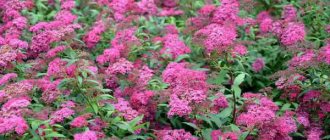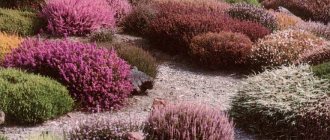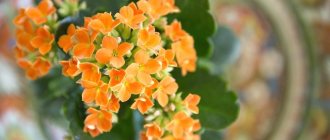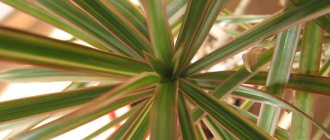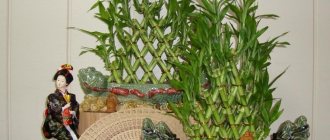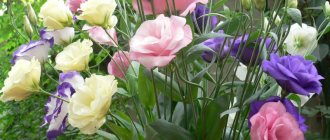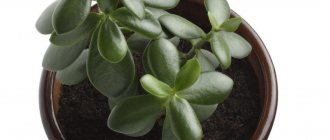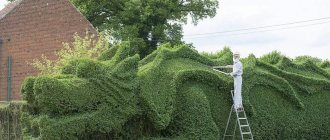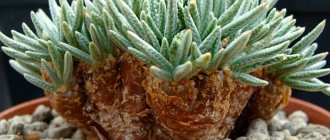Brief description of lobelia
Lobelia comes from areas with temperate and subtropical climates and grows wild in North and South America and Africa. The diversity of the flower allows it to be used for various compositions in the garden, on terraces, and balconies. Lobelia, due to its small size and bright color, looks good everywhere - in the open ground and in pots on the terrace.
Lobelia perennial is sometimes grown by gardeners as an annual. Many people like the appearance of this plant; the rounded bush is low-growing, reaching a maximum height of 25-30 cm. There are species that grow up to 1.5 m. The stems of the plants are thin, their branching begins from the base. Whole lanceolate leaves are densely located on the stems. Flowers with a diameter of approximately 2 cm in lobelia are two-lipped, axillary, located on small pedicels.
There are varieties and varieties of lobelia, found in different colors:
- white,
- raspberry,
- pink,
- blue
Photo of the plant
Flowering begins in June and continues until the end of September. The plant leaves many fruits that look like multi-seeded boxes. Seed germination is up to 3 years. Lobelia has been grown as a cultivated plant since 1861. In the conditions of central Russia, it is cultivated mainly as an annual.
general information
Externally, lobelia resembles something between small violets and forget-me-nots. In nature it is an ordinary perennial, but in our latitudes it is grown in gardens as an ornamental annual plant. Most varieties are very low-growing, with branching stems, dense foliage and an almost continuous cover of small flowers.
Lobelia rarely grows above 20 cm, and the diameter of the flowers is no more than 2 cm. In nature, there are erect stems 75-90 cm high, common near ponds. Shrubs are usually spherical or creeping - both are used for landscaping. Each flower has its own thin and almost weightless pedicel.
Types and varieties
The genus Lobelia has approximately 300 species, including shrubs, perennials and annuals. The species differ in shape and size. Beginner gardeners prefer to grow annual plants, while experienced ones like perennial lobelias, because their lush flowering can be observed for several seasons. The plant is used as a landscaping plant for lawns and borders, or simply grown in flower beds, as a single bush in flower beds. The most popular varieties of lobelia are listed below.
Erinus
Lobelia erinus, characterized by long, hanging shoots. Known by other names - hedgehog lobelia, border lobelia, blue lobelia. Gardeners often grow this perennial plant as an annual. The compact bush has a spherical shape, height – 10-25 cm. The leaves are small lanceolate. The flowers are located in the axillary part of the leaves, their diameter is up to 2 cm. The color of the flowers varies from white to pink, shades of purple, and blue. Flowering begins in June-September and continues until October.
Popular varieties of Lobelia erinus:
- Crystal Palace,
- Emperor Willie,
- Crystal Palace.
Purple
Purple Lobelia (Lobelia cardinalis), also known as cardinal lobelia. An impressive variety of plant grown in damp areas or along the edges of ponds. The height of the shoots is up to 80-90 cm. The inflorescence spike consists of purple flowers. Lobelia cardinalis is grown mainly as a garden plant, less often as an aquarium plant. It grows wild in North America. Scarlet lobelia is not completely frost-resistant; in winter it should be covered or moved to a cool, bright room. Blooms from July until the first frost.
Beautiful
Lobelia x speciosa is a beautiful tall perennial, up to 1 meter high. The bright flowers are large - up to 3 cm in diameter. The plant is winter-hardy, but in cold regions it is grown as an annual plant or left under cover for the winter. In the southern regions, the plant is left to overwinter without shelter.
Known varieties of the species:
- Scarlet Princess - Lobelia blooms all summer with rich red flowers of unusual shape. Lobelia scarlet can be planted singly or in a composition.
- Vulcan red - looks original, because its bright red large flowers look interesting against the background of bronze foliage.
Dortman
Dortman's Lobelia (Lobelia dortmanna) is an endangered plant listed in the Red Book. In the wild, the perennial lives along the banks of lakes and rivers, as well as in reservoirs at a depth of 70-80 cm. After the stems of the plant reach the water cover, flowering begins. Dortmann's lobelia flowers are bell-shaped, white and blue.
Brilliant
Lobelia fulgens - has tall, erect stems decorated with long inflorescences and flowers of bright red and scarlet color. The perennial is quite tall - up to 90 cm in height. They are planted second row on ridges. Blooms in late summer, August until autumn. Like purple, it requires shelter or moving indoors for the winter. The plant is planted in flower beds and the banks of ponds.
Blue
Blue Lobelia (Lobelia erinus) or border is a tall plant native to America, erect stems, blue flowers. Interesting look due to its large size. The plant reaches a height of 80 cm. Blue lobelia blooms in late summer and is completely resistant to frost. Suitable for cut flower.
The popular variety Cozy Corner is a 60 cm tall plant with blue-violet flowers, blooms profusely 2-2.5 months after sowing.
Gherardi
Most representatives of the lobelia gerardii species reach a height of 1.5 meters. The main feature of plants is winter hardiness - the ability to withstand extreme cold (down to -20 ºC). Small purple or blue flowers form spike-shaped inflorescences. Lush flowering is observed during summer and about half of autumn.
Neighborhood: what colors goes with
Lobelia is quite versatile and gets along with many varieties of flowers and perennials. In flower beds it is often given the role of a border. This is not always justified.
The fact is that not all varieties are suitable for this role. If we take a closer look at the results of the landscape design of some gardeners, we will see that hanging species are used as border plants.
In this case, the shoots spread out and end up on the paths, which gives both the plant and the garden paths a not very aesthetic, even unkempt, appearance. But the Pumila and Compact varieties appear in their place if they are planted along the path or along the perimeter of the flower garden. In this case, small hemispherical bushes are planted close to each other so that they form a dense border strip.
Compacta lobelia
Such varieties harmonize well (of course, if the color palette is taken into account) with perennials. They can look especially impressive on alpine slides or in rockeries between stones. It is for these types of flower beds that plants that grow in cushions are often selected.
In the rock garden near the pond
Hanging varieties or spreading bushes with long shoots, which will obscure the natural beauty of the stones by mid-summer, would be inappropriate here. In such flower beds, low plants are planted, shaped like stones, clearly defined.
Different colors of lobelia combine interestingly in any type of flower beds, including alpine hills and rockeries. You can choose different varieties from one series: blue, blue, pink, white, lilac and others. They can be the same in type of growth and size, or they can be completely different.
If you have imagination, you can even play with such diversity.
In group plantings, lobelia is combined with the following annual crops:
- pelargonium;
- verbena;
- bell;
- carnation;
- salvia;
- petunia;
- balsam.
There is another use for lobelia that is now widely used. Lobelia is an excellent ground cover. In a short time it is able to “cover” significant areas.
During flowering, which is very abundant in all varieties of lobelia, the green carpet is covered with small flowers, which looks attractive.
Such varieties that can form a dense carpet are used both in combination with annual and perennial crops. Sometimes in a group of conifers, instead of stone paving or lawn, low lobelias, ampelous or semi-spreading forms are used.
Position and soil
Lobelia can grow in full sun or light shade depending on the species. In most cases, a slightly shaded position is better because flowers lose their intense color in the sun. A completely shaded position is also not conducive to the beauty of the flower, because lack of sunlight is the main reason why lobelia does not bloom.
The soil should be:
- fertile,
- humus,
- permeable,
- slightly damp.
Especially in summer, lobelia should be watered regularly, but it cannot stand in water, because if water stagnates, mold appears on the shoots. Plants planted in pots and containers require good garden soil and drainage to prevent standing water.
What is this flower
Lobelia is one of the most popular types of flowers for the garden or cottage.
Lobelia is one of the popular plants among gardeners. It attracts attention with its delicate flowers, which grow in dense groups, and the ampelous forms hang beautifully from the flower pots, reminiscent of a waterfall. This plant is a perennial shrub of the Bellflower family, which in our country is grown, in most cases, as an annual. The flower's homeland is South Africa, where the flower grows on wet and rocky cliffs, although it can be found almost all over the world in tropical and temperate climates. In total, there are about 300 species of lobelia, of which only 20 are cultivated.
Features of growing seedlings from seeds
Since the plant is heat-loving, it is not sown immediately in open ground, but seedlings are grown. To get flowering in early summer, seeds can be sown in February-March. For planting, use a loose soil mixture, without adding humus, or purchased universal soil.
Important! For the purpose of prevention, a few days before sowing, the soil should be treated with a fungicide solution, for example, Topaz.
For sowing, you will need a flat, wide container that needs to be filled with soil. Since the seeds are quite small, they need to be spread thinly over the surface and not buried.
It is advisable to spray the crops with a growth stimulator, after which the pot should be covered with glass or film. The air temperature in the room is maintained at 18-20 °C. When caring for crops, the container must be opened and ventilated daily, and the glass or film must be wiped from accumulated condensation.
Periodically, moderately moisten the soil. In about 2 weeks, shoots will appear. They need to be released from shelter gradually. The emerging sprouts are very fragile, so you need to use a fine spray to irrigate them. After two or three leaves appear, the seedlings should be transplanted. When choosing the strongest sprouts, they need to be transplanted into separate containers of 4-5 pieces. In the future, when growing seedlings, the air temperature can be reduced to 15-18 °C.
Watering should be regular, but moderate, since a lack of moisture will lead to curling of the leaves, and excess will lead to the appearance of mold. Strong seedlings must be taken out into the open air to harden them. The hardening time needs to be increased daily; after a couple of weeks, the lobelia seedlings are ready for planting.
Specifics of growing and flower care
The starting point for growing a flower such as lobelia is to sow the seed in the form of seedlings, since in this way you can achieve more luxuriant flowering:
- For these purposes, small containers are used, into which it is necessary to pour expanded clay drainage and soil filler. It is prepared from loose soil and sand with the addition of coconut fibers.
- After abundant watering, the seed stock is sown on the prepared base and watered thoroughly again.
- The seeds should only be lightly dusted with sand for better moisture retention.
- The seedlings are covered with polyethylene or a glass lid and placed in a bright sunny place for germination.
It is important to remember that lobelia is a moisture-loving plant and does not tolerate dry, hot climates.
Germination of seed material occurs at least two months after sowing.
When the seedlings reach three centimeters, they should be picked into separate cups (no more than four per container).
Important!
Read more about how to grow good lobelia seedlings here
After the stems reach a length of 70 mm, you need to pinch them and wait for flowering.
Flowers should be planted in open soil no earlier than mid-May, when the likelihood of soil freezing is minimized.
For planting, it is better to choose sunny, not shaded areas with loamy, loose soil.
It blooms while still a seedling and continues to delight the eye with its bright inflorescences until the first frost.
The plant is distinguished by its unpretentiousness, requiring only abundant moisture and sufficient illumination of the growing area.
Important!
It is also important not to overdo it with mineral fertilizers based on nitrogenous compounds in order to avoid the destruction of inflorescences.
How to propagate lobelia: by cuttings or dividing the bush?
Cuttings are used when inheritance of maternal characteristics is required. For this purpose, you need to dig up the strongest bushes in late autumn and plant them in pots. Containers should be stored in a cool greenhouse or on a windowsill in an apartment. In winter, the perennial lobelia flower needs to be regularly watered and ventilated. After the onset of spring, the cuttings are cut (each length is 8-10 cm), placed in a container with a root former according to the instructions for the preparation. Plant the cuttings separately in plastic cups.
A less popular method of propagating lobelia is dividing the bush. Reproduction is carried out in the spring when the first shoots appear on the bushes. A healthy bush is dug up and divided into parts, after which the seedlings are placed in planting holes prepared in advance.
Protection from pests and diseases
If you follow the growing rules, no special problems arise. Sometimes gardeners complain about the development of fungus. The main reason is excess soil moisture. It is important to normalize the substrate moisture regime and loosen the soil more often. The fungus is destroyed using fungicides.
When there is a lack of moisture, spider mites settle on the tender green lobelia. In an arid environment, parasites multiply quickly, the colony actively increases, and in a short period the greenery quickly disappears in the places where the voracious pests live. Ticks are destroyed using acaricides. The drugs Antiklesch, Fufanon, Neoron, Flumite or, in case of severely infested plantings, the powerful insectoacaricide Actellik are used.
When using chemicals, be sure to wear gloves, a respirator, a shirt, a cap or headscarf, and plastic goggles. Violation of the rules for working with insecticides, fungicides and acaricides can lead to severe poisoning of the body.
Lush bushes attract slugs. Pests are collected by hand, beer traps for slugs are tripled, the soil is sprinkled with crushed eggshells, and the plants are sprayed with Metaldehyde or Thunderstorm.
How is planting in the ground carried out?
Seedlings can begin to be planted in open ground in the second ten days of May, after warm weather has established. The area where planting will take place should be well lit or slightly shaded. Loamy or sandy soil with humus is ideal.
Important! The soil should not be too fertile, as this will lead to an abundant growth of green mass and inhibition of flowering.
First you need to dig up the area and equip planting holes. The depth of each hole should be 20-30 cm, and the distance between them should be 15-20 cm. Lobelia is planted using a transshipment method. Having placed the root with a ball of earth in the hole, you need to add more soil and then compact the top layer of soil. 3-4 sprouts should be placed in one hole. At the end of the work, the bushes need to be watered.
The most popular varieties with photos
There are many varieties of lobelia that differ in color: white, blue, purple, lilac, red. Let's look at the most popular of them.
Sapphire - the plant is endowed with lush and hanging stems, reaching a length of 35 cm. The variety blooms with small, blue flowers with white spots on the petals.
Lobelya Sapphire is endowed with lush and drooping stems reaching a length of 35 cm
Emperor Willie is a dwarf variety with a bush height of no more than 10 cm. The flowers are blue. This variety is excellent for border plantings.
Emperor Willy is a dwarf variety with a bush height of no more than 10 cm
Crystal Palace - the variety is distinguished by abundant flowering with many small flowers blooming simultaneously on the bush. The color of the flowers is deep purple.
The peculiarity of lobelia Crystal Palace is abundant flowering with many simultaneously blooming small flowers on the bush
Cambridge Blue - the variety has low-growing and lush bushes with branches up to 10 cm long. The flowers are small in size, pale purple in color with a blue tint.
The Cambridge Blue variety has low-growing and lush bushes with branches up to 10 cm long and pale purple flowers with a blue tint.
Lobelia Riviera is an annual plant that blooms throughout the season and reaches a height of 10 cm. The flowers are bright pink or dark blue. During the period of abundant flowering, the leaves are almost completely hidden by the flowers. The variety is best suited for planting on borders or in boxes on balconies.
Recent Entries
Chainsaw or electric saw - what to choose for the garden? 4 mistakes when growing tomatoes in pots that almost all housewives make Secrets of growing seedlings from the Japanese, who are very sensitive to the soil
Lobelia Riviera blooms throughout the season and reaches a height of 10 cm
Miss Klibran is a wide bush with a flowering area up to 30 cm in diameter. The plant grows up to 15 cm, the flowers are bright purple with a white center.
Lobelia Miss Clibran has a flowering area up to 30 cm in diameter and reaches a height of 15 cm
Blue fountain - the bush is formed from 6-8 stems no more than 30 cm long. The branches resemble a blooming blue fountain. The flowers are characterized by a blue color with a white spot.
Lobelia variety Blue Fountain is formed from 6–8 stems up to 30 cm long, and the branches resemble a blue fountain of flowers
Features of care
Watering, pruning
Bush lobelia is a heat-loving plant, so you need to make sure that the soil is always slightly moist. In extreme heat, plants can be watered twice a day. Growing rules include periodic loosening of the soil and removal of weeds.
The shoots are pruned at the end of August if it is necessary for the plant to bloom again.
Fertilizers
From April, the flower needs to be fed with liquid fertilizer intended for flowering plants. At the beginning of flowering, potassium compounds should be added to the plants. It is advisable to feed the flowers with complex mineral fertilizers 2 times per season.
When using preparations, you must follow the manufacturer's instructions to avoid excessive concentration of the soil solution. In case of excessive feeding, brown spots appear on the leaves.
Diseases and pests
The perennial is resistant to diseases and pests, especially if planting and care in the open ground is carried out correctly. Sometimes plants are affected by:
- powdery mildew,
- root rot,
- rust,
- spotting.
It is necessary to regularly check the plants, remove damaged leaves and bushes; for extensive lesions, fungicides, for example, Topaz, will help.
Pests attacking lobelia:
- aphid,
- slugs,
- Scale insects.
To combat slugs, special traps or chemicals are used; you can sprinkle eggshells or slaked lime around the bush. Other pests can be eliminated using insecticides.
Wintering
For wintering, it is better to move the plants to a house or greenhouse. To preserve the flowers, this must be done before frost. A pot with a lobelia bush transplanted into it can be stored on a windowsill. It is noteworthy that a plant brought into the house will delight its inhabitants with flowering for several more months.
Conclusion
Lobelia is an unusual and unique plant. This very decorative flower impresses with its shape and lush bloom. Grown on a balcony or terrace, it attracts the gaze of passers-by. The plant can grow on land and water. If you understand the peculiarities of cultivation, planting from seeds and cuttings and the intricacies of caring for it, then a beautiful decoration for a personal plot or home will delight the owners and their guests every year.
The place of lobelia in landscape design
Lobelia is quite often used in landscape design. The flower looks great both on the balcony and in the form of “carpets” near ponds, in alpine slide compositions next to other perennials. In modern design, lobelia is widely used to create coziness in the corners of the garden, for which it is planted in flowerpots or containers. The most common places for planting plants at home are flower beds, borders, and hanging baskets.
In the flowerbed
Before planting a flower on a garden bed or flowerbed, you need to think about what the color scheme of the future composition will be.
Rabatka is a rectangular flower garden in the form of a narrow strip of about 2 m, located along a fence or garden path with other plants.
To combine with lobelia, the flowerbed must be formed from similar shades: blue, lilac, light blue, violet. This combination of colors looks quite attractive: crimson and white, blue and red, yellow and blue.
To combine with lobelia, the flowerbed should be formed from purple, lilac, blue and light blue shades
In hanging baskets
When growing ampelous species, such flowers look most beautiful in hanging baskets in the form of a ball - the plants are a continuous carpet of flowers that hides the frame. One of the easiest options for planting lobelia is coconut liners. Holes are first made in them, filled with soil and plants are planted on the outside of the container.
Ampelous lobelias look great in hanging baskets
In decorative flowerpots
Lobelia looks very attractive in decorative flowerpots, for which you need to choose the right “neighbors”. If you use low-growing flowers in tandem with it, then to diversify the composition you can plant plants with different leaf textures and flower sizes. Large diameter pots are perfect for such plantings. To add dynamism to the flower arrangement, you can combine compact plants with upright growing ones.
An original solution in landscape design would be to use a flowerpot similar to a round vase. In this case, the ampelous lobelia can be planted in the bowl itself, and small bushes of this flower can be planted at the foot, making a light backfill. To add some flair to your garden design, you can install several flowerpots of different sizes with contrasting colors.
To make lobelia in flowerpots look attractive, you need to choose the right “neighbors”
Tower of flowerpots
Lobelia stands out noticeably when grown in a flower tower, that is, pots stacked on top of each other. To form such a composition, take several clay pots with a difference in diameter of about 7 cm. After this, fill the lower container with soil and insert reinforcement, which is buried in the garden soil through a hole in the bottom, thereby ensuring the stability of the flower shelf. The remaining pots are placed on top of each other, putting them on the reinforcement and filling them with soil, followed by compaction. Lobelia is planted in combination with other flowers, starting from the lower pots, after which it is watered abundantly. In such compositions, blue flowers go well with purple and pink petunia, as well as white and red balsam.
As an example, a tower of pots is given, in which the lobelia will stand out noticeably
Possible difficulties in growing
When cultivating a perennial crop in a garden plot, you must try not to over-moisten the soil layer. Otherwise, the roots of the plant will begin to rot.
One of the pests of lobelia is the spider mite.
Mold, rot, rust, blackleg and powdery mildew will appear on the surface of the lobelia. Therefore, it is necessary to strictly adhere to the amount of watering to avoid infection.
Planting lobelia seeds
When performing this planting method, it is worth remembering that flowering will begin a couple of months after sowing. For this reason, gardeners most often use seedlings.
Soil and containers for planting. For good development of seedlings, it is recommended to use soil with a loose consistency that allows air to pass through well. Its acid level should be 6.5 pH. For these purposes, suitable soil is purchased or made independently, which includes peat, humus, river sand and turf soil in a ratio of 2:2:1:2. The selected container must first be disinfected, and several holes must be made in its bottom to drain excess liquid. The soil is also disinfected using boiling water, a fungicidal solution or steam heating. When the earth cools down and dries out, you can begin further work.
Lobelia beautiful and blue
Blue or Lobelia siphilitica. This is a perennial flower that has blue or purple spikelet-like inflorescences. The bush is not very spreading, rather erect, rather tall.
Previously it was believed that lobelia could treat syphilis and other complex diseases.
This is not the most decorative variety of lobelia, and therefore not so in demand. But on its basis many hybrids were bred. Crossing this variety with shiny and purple lobelia resulted in a well-loved species called Compliment.
Lobelia is wonderful. This is a perennial flower that grows and forms beautiful, tall bushes, about a meter high. The flowers are large, bright, growing up to 3 cm in diameter. In the southern territories, the plant is grown as a perennial crop.

